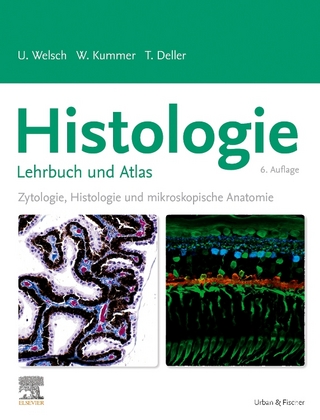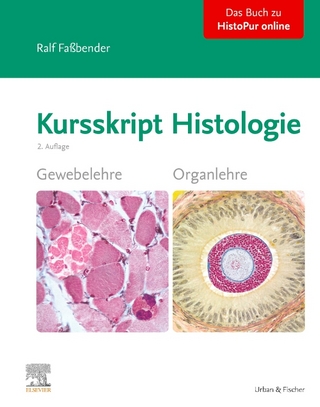
Histopathology
Seiten
2011
Oxford University Press (Verlag)
978-0-19-957434-6 (ISBN)
Oxford University Press (Verlag)
978-0-19-957434-6 (ISBN)
- Titel ist leider vergriffen;
keine Neuauflage - Artikel merken
Histopathology describes the processes and practices that are central to the role of the histopathologist within a functioning diagnostic laboratory, from pre-sampling to diagnosis to laboratory management.
Biomedical scientists are the foundation of modern healthcare, from cancer screening to diagnosing HIV, from blood transfusion for surgery to food poisoning and infection control. Without biomedical scientists, the diagnosis of disease, the evaluation of the effectiveness of treatment, and research into the causes and cures of disease would not be possible.
The Fundamentals of Biomedical Science series is written to reflect the challenges of practicing biomedical science today. It draws together essential basic science with insights into laboratory practice to show how an understanding of the biology of disease is coupled to the analytical approaches that lead to diagnosis.
Assuming only a minimum of prior knowledge, the series reviews the full range of disciplines to which a Biomedical Scientist may be exposed - from microbiology to cytopathology to transfusion science. Alongside volumes exploring specific biomedical themes and related laboratory diagnosis, an overarching Biomedical Science Practice volume gives a grounding in the professional and experimental skills with which any Biomedical Scientist must be equipped.
The series
· Understands the complex roles of Biomedical Scientists in the modern practice of medicine
· Understands the development needs of employers and the Profession
· Addresses the need for understanding of a range of fundamental sciences in the context of Biomedicine
· Places the theoretical aspects of Biomedical Science in their practical context
The series is developed in partnership with and endorsed by the Institute of Biomedical Science. See ibms.org for more information.
Histopathology describes the processes and practices that are central to the role of the histopathology biomedical scientist, from pre-sampling to diagnosis to laboratory management.
An understanding of the physiology of cells and tissue is vital to the successful identification of clinical conditions and, as such, this book begins by laying out the key features of both and their significance for diagnosis. But histopathology relies heavily on optical technology, and microscopy is covered in detail from fixation, through staining to light and electron imaging methods.
A complete course on the concepts and skills needed for a biomedical scientist to work within a functioning histopathology laboratory.
Online Resource Centre
The Online Resource Centre to accompany Histopathology features:
For registered adopters of the book:
· Figures from the book, available to download
For students:
· An interactive Digital Microscope, encouraging the exploration of tissue samples
· Self-assessment modules to help you to check and reinforce understanding of the basic science introduced in each volume
· Video podcasts including interviews with practicing biomedical scientists, and 'in the lab' footage showing biomedical science in practice
Biomedical scientists are the foundation of modern healthcare, from cancer screening to diagnosing HIV, from blood transfusion for surgery to food poisoning and infection control. Without biomedical scientists, the diagnosis of disease, the evaluation of the effectiveness of treatment, and research into the causes and cures of disease would not be possible.
The Fundamentals of Biomedical Science series is written to reflect the challenges of practicing biomedical science today. It draws together essential basic science with insights into laboratory practice to show how an understanding of the biology of disease is coupled to the analytical approaches that lead to diagnosis.
Assuming only a minimum of prior knowledge, the series reviews the full range of disciplines to which a Biomedical Scientist may be exposed - from microbiology to cytopathology to transfusion science. Alongside volumes exploring specific biomedical themes and related laboratory diagnosis, an overarching Biomedical Science Practice volume gives a grounding in the professional and experimental skills with which any Biomedical Scientist must be equipped.
The series
· Understands the complex roles of Biomedical Scientists in the modern practice of medicine
· Understands the development needs of employers and the Profession
· Addresses the need for understanding of a range of fundamental sciences in the context of Biomedicine
· Places the theoretical aspects of Biomedical Science in their practical context
The series is developed in partnership with and endorsed by the Institute of Biomedical Science. See ibms.org for more information.
Histopathology describes the processes and practices that are central to the role of the histopathology biomedical scientist, from pre-sampling to diagnosis to laboratory management.
An understanding of the physiology of cells and tissue is vital to the successful identification of clinical conditions and, as such, this book begins by laying out the key features of both and their significance for diagnosis. But histopathology relies heavily on optical technology, and microscopy is covered in detail from fixation, through staining to light and electron imaging methods.
A complete course on the concepts and skills needed for a biomedical scientist to work within a functioning histopathology laboratory.
Online Resource Centre
The Online Resource Centre to accompany Histopathology features:
For registered adopters of the book:
· Figures from the book, available to download
For students:
· An interactive Digital Microscope, encouraging the exploration of tissue samples
· Self-assessment modules to help you to check and reinforce understanding of the basic science introduced in each volume
· Video podcasts including interviews with practicing biomedical scientists, and 'in the lab' footage showing biomedical science in practice
Dr Guy Orchard is Consultant Grade Biomedical Scientist, Laboratory Manager at Viapath, St John's Institute of Dermatology, and Viapath Operational Lead for Head and Neck Pathology at Guys Hospital, London. Step Publishing, Institute of Biomedical Science, UK. Brian Nation is the editor of The Biomedical Scientist and British Journal of Biomedical Science.
1. What is Histopathology? ; 2. Staining-principles and Demonstration Techniques ; 3. From Specimen to Slide ; 4. Stains in Action ; 5. Immunocytochemistry in Diagnostic Histopathology ; 6. Immunocytochemistry in Action ; 7. Molecular Diagnostics in Histopathology ; 8. Light Microscopy ; 9. Transmission Electron Microscopy ; 10. Essentials of Laboratory Management ; 11. Mortuary Practice
| Reihe/Serie | Fundamentals of Biomedical Science |
|---|---|
| Zusatzinfo | 77 line illustrations and 33 half-tone |
| Verlagsort | Oxford |
| Sprache | englisch |
| Maße | 190 x 247 mm |
| Gewicht | 891 g |
| Themenwelt | Medizin / Pharmazie ► Medizinische Fachgebiete ► Laboratoriumsmedizin |
| Studium ► 1. Studienabschnitt (Vorklinik) ► Histologie / Embryologie | |
| Studium ► 1. Studienabschnitt (Vorklinik) ► Physiologie | |
| Studium ► 2. Studienabschnitt (Klinik) ► Pathologie | |
| Naturwissenschaften ► Biologie ► Humanbiologie | |
| ISBN-10 | 0-19-957434-0 / 0199574340 |
| ISBN-13 | 978-0-19-957434-6 / 9780199574346 |
| Zustand | Neuware |
| Haben Sie eine Frage zum Produkt? |
Mehr entdecken
aus dem Bereich
aus dem Bereich
Zytologie, Histologie und mikroskopische Anatomie
Buch | Hardcover (2022)
Urban & Fischer in Elsevier (Verlag)
54,00 €
Gewebelehre, Organlehre
Buch | Spiralbindung (2024)
Urban & Fischer in Elsevier (Verlag)
25,00 €


